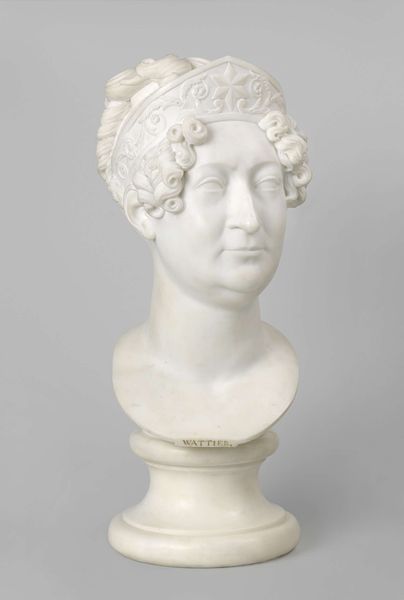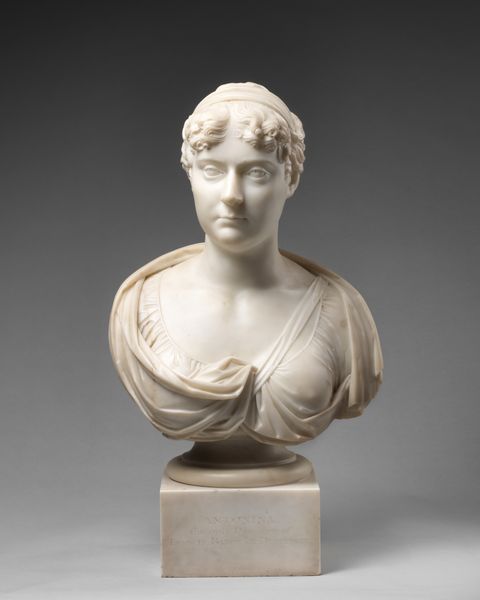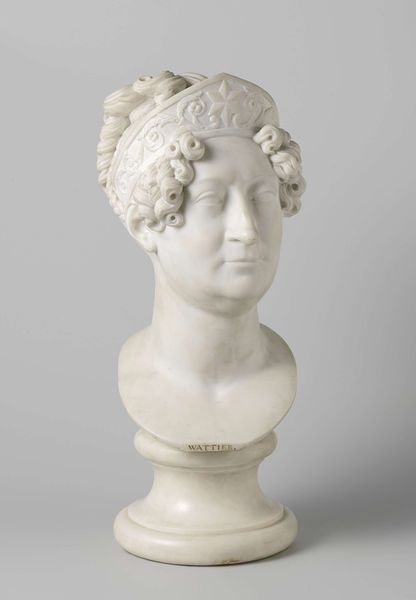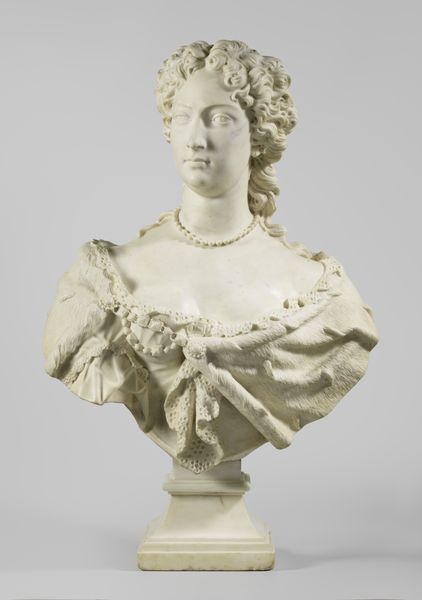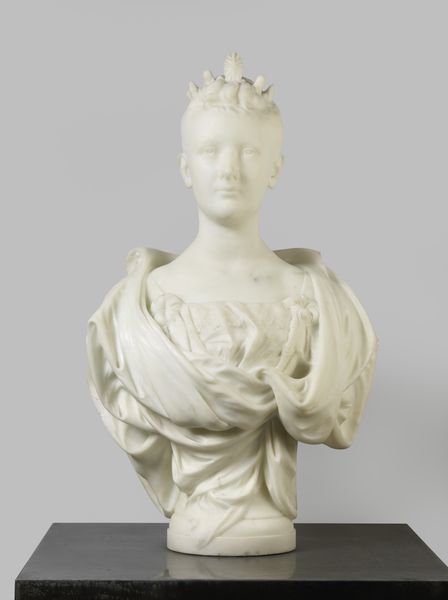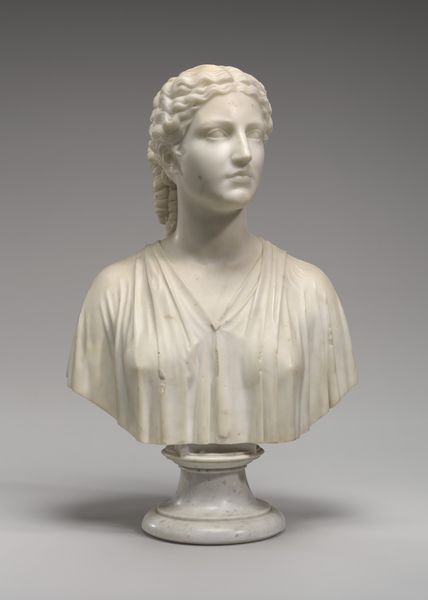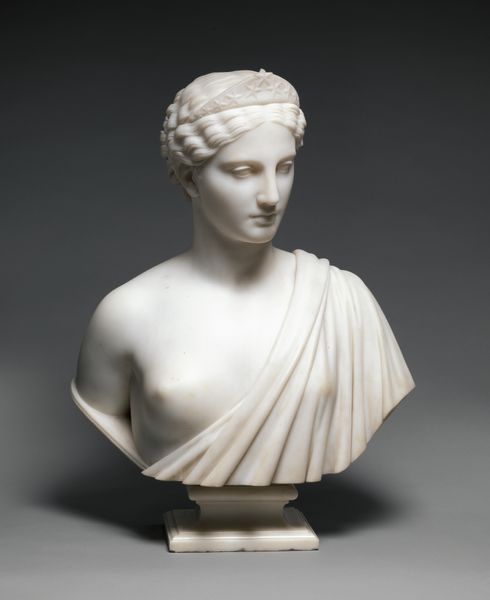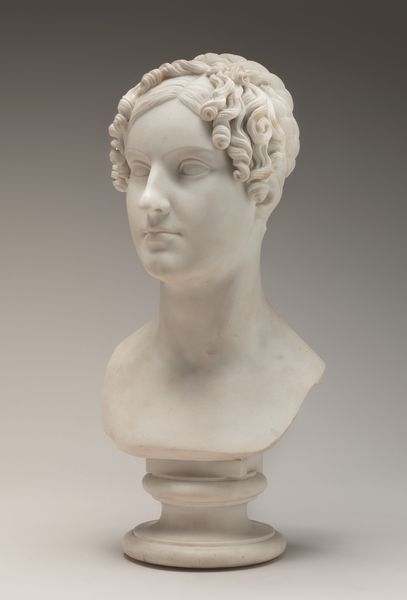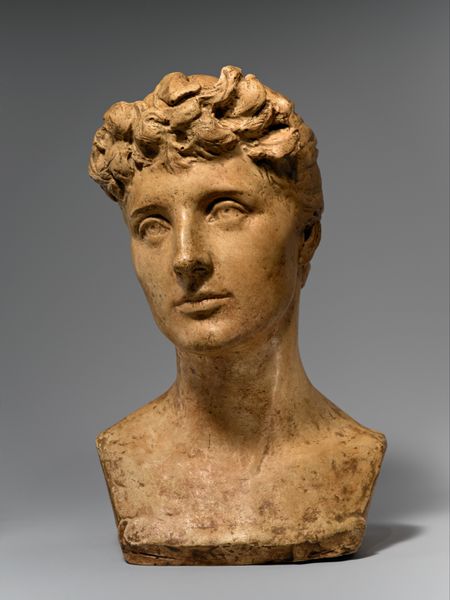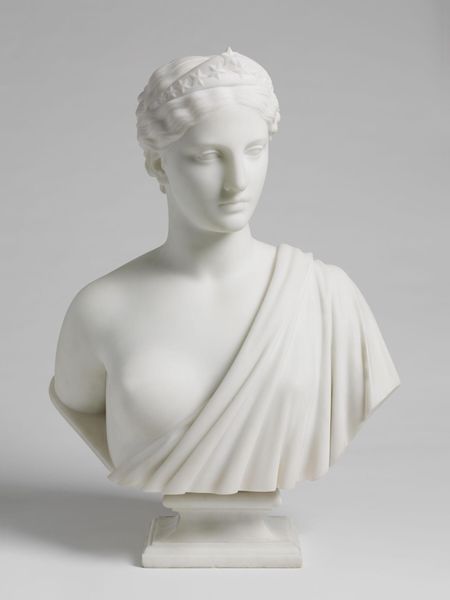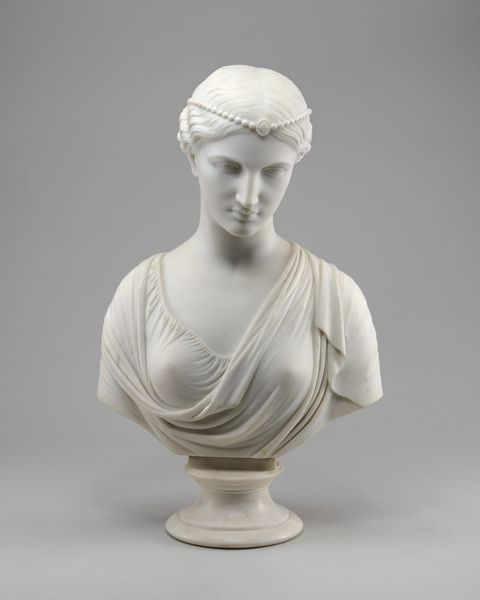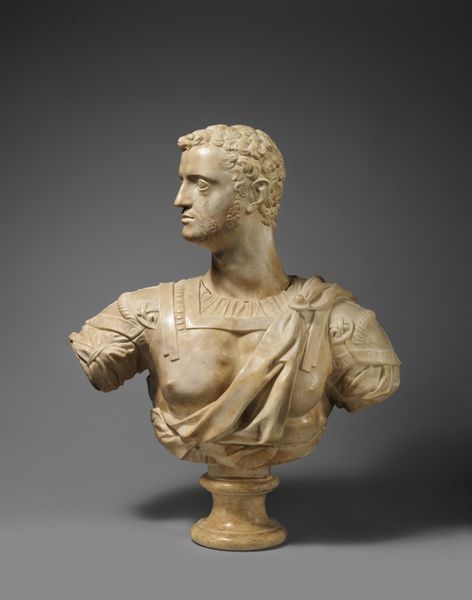
sculpture, marble
#
portrait
#
sculpture
#
classicism
#
sculpture
#
marble
#
italian-renaissance
Dimensions: 47 cm (height) x 43.3 cm (width) x 23.5 cm (depth) (Netto)
Curator: Immediately striking! There’s a quiet, contained grace to it, isn’t there? Editor: It is, although “grace” might mask a deliberate statement of wealth and position. We're looking at "Bust of a Young Woman" by Simone Bianco, created sometime between 1512 and 1553, a fine example of Italian Renaissance portraiture currently residing at the SMK, Statens Museum for Kunst. It is carved from marble, of course. Curator: The selection of marble alone communicates status. How extraordinary it is—transforming this dense material into the impression of delicate flesh and elaborately styled hair. The crafting is impressive. Were these busts made for private citizens or mostly nobility? Editor: While commissioned by both, the key element lies in what the artwork performs. This sculpture serves not only as a personal memento, it presents this young woman—who, without accompanying documents, unfortunately remains nameless—to her contemporaries and, frankly, to posterity. A timeless figure embodying ideals of feminine beauty and virtue, but presented in cool marble. Curator: It speaks to a specific method of production in that period. Each tool, each choice of marble grade, all represent economic investment and skillful labor intended to elicit respect for her person, family connections, or some other sign of her high standing. I'm also thinking about who had access to these kinds of sculptures. Editor: Absolutely, and consider the sculptor’s labor too. While we appreciate Bianco's mastery, his skill becomes another facet that mirrors the social framework of this time. Think about whose stories and likenesses were considered important enough to immortalize. We should question that inherent bias. Curator: The polish alone indicates the high skill of the makers. How the medium itself serves not just as a means of conveying a likeness, but also a register of labor, skill and resources of the people. This marble—and its manipulation—tell their own tales of extraction and refinement. Editor: True. It compels us to consider how our perceptions of beauty are constructed, and which stories continue to be privileged. It also challenges viewers, like us, to keep an awareness on broader implications. Curator: Indeed, it all emphasizes how inextricably bound art is to broader economic and labor systems. Editor: Agreed. Viewing artwork critically isn’t just about appreciating a pretty object, but understanding its role in society and what voices still need amplifying.
Comments
No comments
Be the first to comment and join the conversation on the ultimate creative platform.
